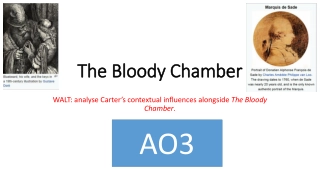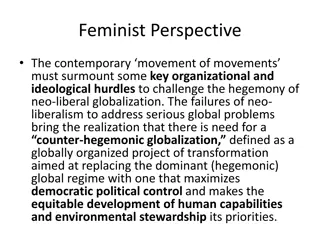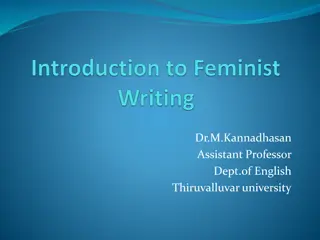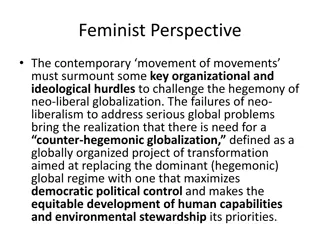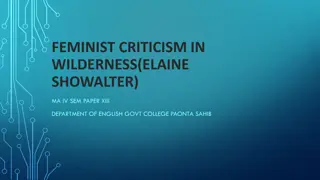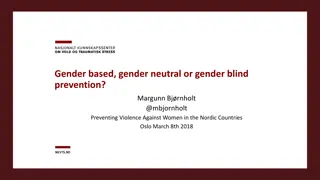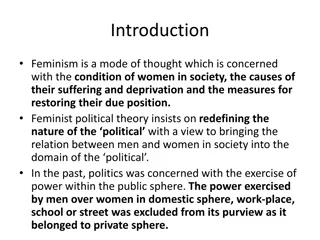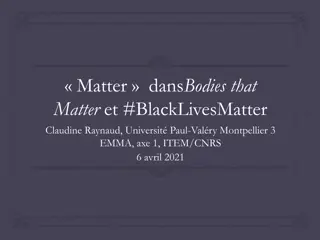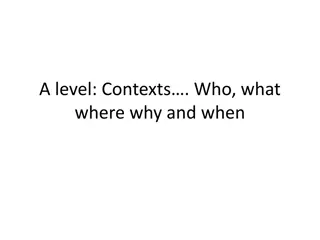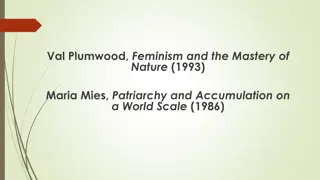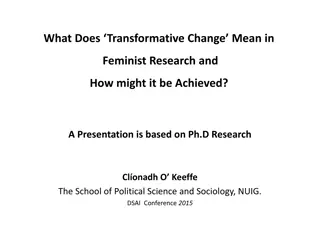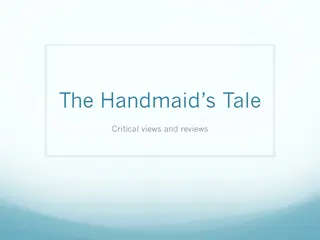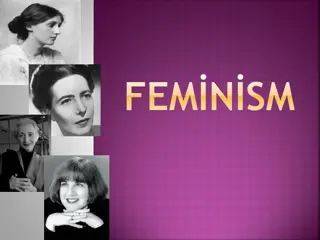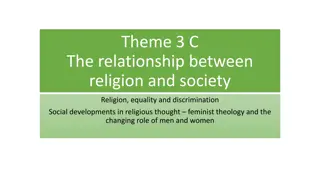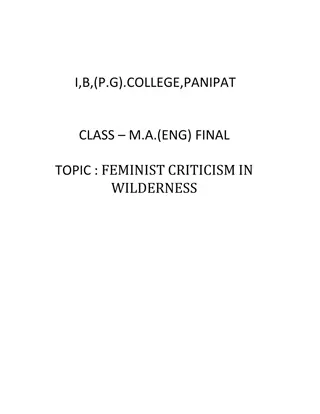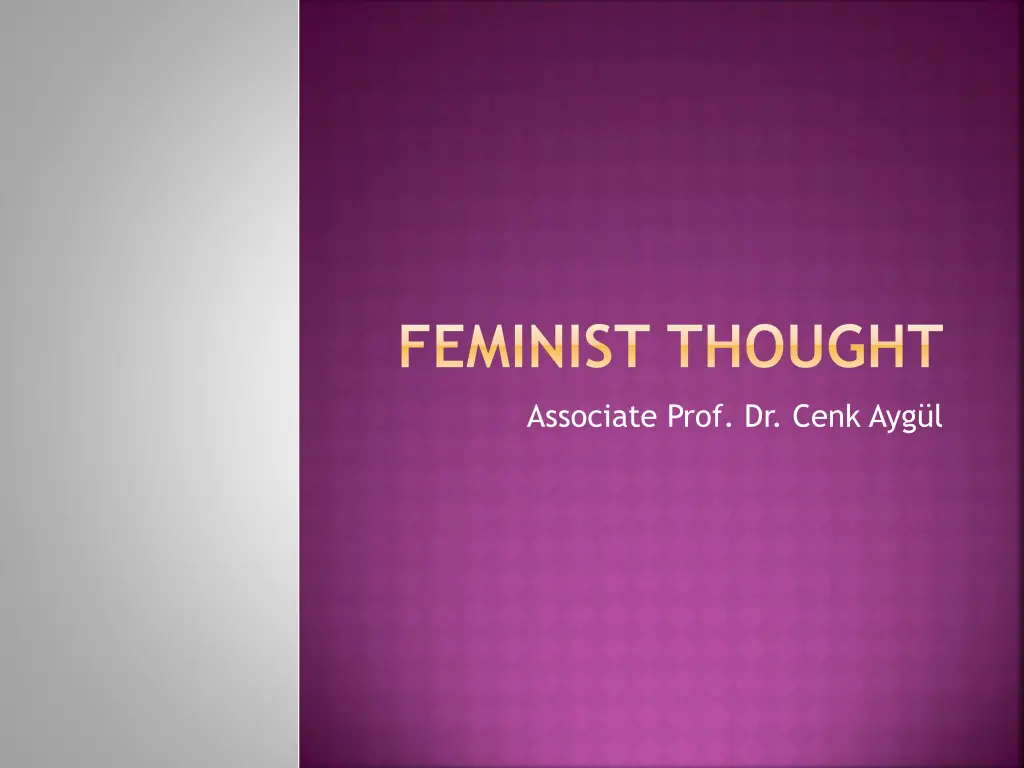
Understanding Feminist Thought: Historical Overview and Current Trends
Explore the evolution of feminist movements, from early suffragettes to modern feminist currents such as liberal feminism, radical feminism, Marxist feminism, and socialist feminism. Gain insights into the values, characteristics, and oppression faced by women throughout history. Discover how feminist theories analyze gender dynamics in different spheres of life.
Download Presentation

Please find below an Image/Link to download the presentation.
The content on the website is provided AS IS for your information and personal use only. It may not be sold, licensed, or shared on other websites without obtaining consent from the author. If you encounter any issues during the download, it is possible that the publisher has removed the file from their server.
You are allowed to download the files provided on this website for personal or commercial use, subject to the condition that they are used lawfully. All files are the property of their respective owners.
The content on the website is provided AS IS for your information and personal use only. It may not be sold, licensed, or shared on other websites without obtaining consent from the author.
E N D
Presentation Transcript
FEMINIST THOUGHT Associate Prof. Dr. Cenk Ayg l
Although feminists are known to be a group working for equality of women with men, it is necessary to know that there are various feminist currents some of which have aims other than /transcending equality. Do you think that men and women have different values and characteristics? If so, what are the values of women? What are the characteristics of men? (do men come from Mars and women from Venus?) Do you think that women are oppressed? In what ways? Were women oppressed to the same extent in earlier times?
BASIC POINTS Feminism takes gender as the main dimension of analysis (sex and gender are not the same!). Gender is a specific form of power. In international relations, the difference between the public and the private is important. It analyses how ideas pertaining to gender affect the functioning of international organizations. In the functioning of the global order gender is a significant factor. They start to analyze subjects and issues which/who were previously thought to be not significant.
FIRST FEMNSTS Amazons Mary Wollstonecraft: Thoughts on the Education of Daughters (1787) and A Vindication of the Rights of Woman (1792). She died when she was giving birth to her daughter (1797). Suffragettes: In 1866 Emily Davis and Elizabeth Garrett submitted a petition signed by 1499 people who demanded women s suffrage. This petition was submitted by the help of J. S. Mill to the parliament but nothing came out of it. At the beginning of the twentieth century, suffragettes adopted more radical methods and during and after the First World War, they started to reap the fruits of their efforts.
WOMENS SUFFRAGE New Zealand: 1893 Southern Australia: 1895 Finland: 1906 Norway: 1913 Denmark: 1915 Canada, Soviet Russia, Germany, Poland: before the end of the 1. World War. England (for women older than 30): 1918 (1928, age 21) Holland: 1919 USA: 1920 Turkey: 1926 Greece: 1930 (literate and older than 30, others only in 1952) France: 1944 Yugoslavia: 1945 Afghanistan: 1963 Switzerland: 1971 Saudi Arabia: 2015 (expected)
FEMINIST CURRENTS Liberal feminism (1. wave): equality in the realm of law, family and social life. The basic concept is individual. Radical feminism (2. wave): Basic concept is patriarchy. It is impossible to attain full equality because of these patriarchal values. Marxist feminism: Marxist concepts. The family fulfills three functions: labour power for capitalism / reproduction of labour to be able to work the next day / consumption unit Socialist feminism: It is a blend of Marxism and radical feminism. It came up with the distinction of the public / private.
FEMNST CURRENTS Psychoanalytic feminism: Id/ego/s perego. Oedipus complex. Existentialist feminism: Simone de Beauvoir s book The Second Sex. Women has to get rid of the obstacles in their heads. Postmodern feminism: There cannot be grand narratives. Post-structuralist feminism: The basis of oppression of women arises from the language. The meaning system, silence, metaphors and othering creates/recreates women as secondary subjects.
SIGNIFICANCE OF FEMINISM FOR POLITICAL SCIENCE AND IR Refer to the lecture notes
ASSUMPTIONS Human nature according to the feminists is not fixed. It is not possible to differentiate facts from values. There is a close connection between power and knowledge. It is necessary to struggle for the emancipation of women (Exception: Postmodern feminists do not accept grand narratives. So they do not accept the term emancipation).
THEMES: STATE AND POWER What are the conditions of women in state institutions and international organizations? Does an increase the proportion of women employees create a qualitative difference in the functioning of these organizations? Should women participate more in the army? Would this change the army? Women s rights as part of human rights: Suttee, women genital mutilation, honour killings. Feminization of poverty.
THEMES: IDENTTY AND COMMUN TY Male and female visions of nationalism, socialism etc. The relationship between macho attitudes and the political system. Lower wages of women compared to men. Oppression of women by religions.
THEMES: WAR The states arm the men, while at the same time disarming the women. War expenditures steal from welfare, education, health, children and women.
THEMES: DETERRENCE Theory of deterrence People we send to other countries are mostly soldiers, police, spies. Women are not sent much.

